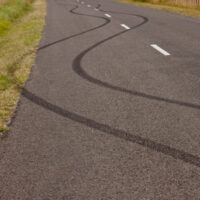Who’s At Fault If You Swerve To Avoid A Car Accident But Hit Another Vehicle?

No matter how careful you are when operating a motor vehicle on the road, other drivers’ mistakes could still cause you to crash your car. For example, let’s imagine that a driver merges into your lane without signaling or hits the brakes unexpectedly, causing you to swerve to avoid a collision.
However, as a result of the maneuver, you end up crashing into another vehicle. Who’s at fault in this situation? Can you be held liable for a collision if your only intention was to avoid another accident?
No-Contact Car Accidents and Phantom Drivers
Often, the motorist who caused you to swerve will stop even when they were not hit by your or anyone else’s car. If that motorist hit you while you were trying to swerve to avoid the crash, they are more likely to remain at the scene.
However, not all at-fault drivers remain at the scene of a crash in which they were not hit even though they were the ones who caused the accident. If a motorist caused you to crash into another vehicle or a fixed object alongside the road – but not their vehicle – you were involved in the so-called “no-contact accident.”
If the driver who caused you to swerve fled the scene and cannot be found or identified, that driver is called a “phantom driver.” A phantom driver may not stay at the scene either intentionally or unintentionally. Some drivers do not realize that they caused a crash involving other vehicles.
As you can guess, establishing fault in a no-contact accident or crash involving a phantom driver can be tricky. For this reason, it is advised to speak with a Miami car accident attorney to review your particular situation and help you determine who was at fault.
Who’s at Fault if You Swerve to Avoid a Crash but Hit Another Car?
Florida follows the doctrine of pure comparative negligence, which means there may be more than one at-fault party in a single accident. If multiple people are responsible for causing the crash, their compensation is reduced in proportion to their degree of fault.
The same principle applies to no-contact accidents and crashes caused by a phantom driver. For example, let’s imagine that a driver in front of you hits the brakes, causing you to swerve and hit another vehicle in the adjacent lane. The court finds that you were 20% at fault for the collision because you did not maintain a safe distance. Meanwhile, the driver who slammed on the brakes is deemed 80% liable for the accident.
As a result, your compensation will be reduced by 20% because you contributed to the crash. If the driver who slammed on the brakes fled the scene of the crash, you might have a hard time recovering damages if your injury is severe.
What if the at-Fault Driver is Nowhere to Be Found?
Florida is a no-fault auto insurance state, which means your insurance company will cover your damages and losses regardless of fault. However, if your damages exceed the policy limits (in Florida, the minimum requirement for Personal Injury Protection is $10,000), you may not be able to obtain additional compensation if the at-fault driver cannot be identified and found.
You may want to consult with a Miami car accident lawyer to help you recover additional damages from other available sources. Contact our attorneys at Pita Weber Del Prado to get a case review. to help you recover additional damages from other available sources. Contact our attorneys at Pita Weber Del Prado to get a case review. Call at 305-670-2889 to schedule a consultation with our knowledgeable lawyers.



